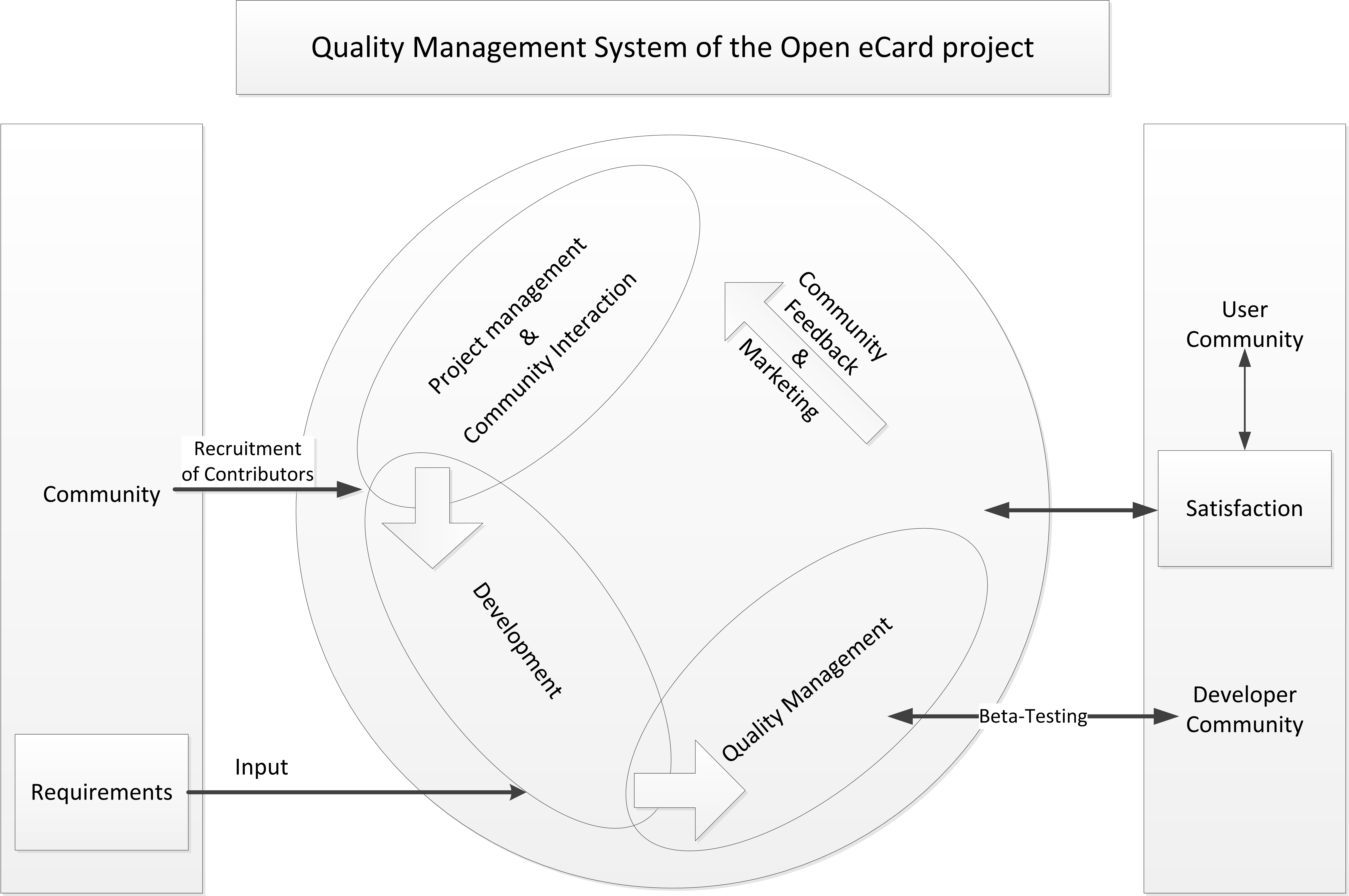
The high level view of the development is probably best explained by the following picture which includes also the quality management and the community involving processes. It is the ISO 9000 inspired Quality Management System used in the project.

For a better understanding of this development circle it is necessary to know the roles which are setup in the process of development.
The project comprises the following roles:
The Project Manger, Manager, Testers, and Core Developers form the core team which is responsible for development of application core. They may be assisted by developers from the developer community.
So now may want to know how the development process of a new release (minor or major release) is initiated and what's happening in the phases of the development. This will be the subject of the next sections.
On the very beginning there have to be defined what the development goals of a new release are. This includes evaluation of the feasibility of new features and the necessity to fix open bugs also the stability may be subject of decision process. In order to archive the goal definition the feature and bug trackers are considered to get an overview about what the needs of the community are to improve the acceptance and increase the spreading. Furthermore there is the core team which may have ideas they want to implement to simplify the internal structure or module communication or whatever. All the information are gathered by the Project Manager and discussed with the manager. In the end the features to implement and bugs to fix are transformed into tasks which are assigned to specific developers which are than responsible for the realization. Also an release date and a feature freeze date is stated, the feature freeze is around two weeks before the release date.
In this phase the developers implement the features or solve the bugs according to their assigned tasks. Features have to be implemented until the feature freeze date else the feature will be rejected and is part of the next release. After the feature freeze it is just allowed to commit fixes for existing code. While the implementation the developer may commit his work to the development branch if the commit full fills the minimum quality requirements which are:
More commit related rules may be found in the Repository Guidelines. Next to the requirements for the commits there are also requirements regarding to the style of the code. The code styling is described in the code style guide which may be found here.
A person is nominated by the project manager (usually a tester or release manager) who is responsible for supervising the commits of the developers and reject a commit if these rules are not obeyed.
As stated above the development phase lasts until the feature freeze which also is the entry point for the test phase.
During this phase the manager and the tester test the code intensively and report every found bug to the responsible developer. The test include an acceptance test according to BSI-TR03124-2 and several other tests which are defined in the Quality Management section of the Wiki. The release phase is entered just if all problems occurred while testing are solved.
With the tests having been completed, the release manager builds a release version and distributes it to the users. A release version does not mean that the final release is publish also a public beta or so is possible to ensure everything is working correctly because integration tests are mostly executed with test cards which may be different compared to production cards. This is especially necessary if the is support for new cards included into a release. The status of the release may be determined by the version number.
The release versions are numbered in accordance to Semantic Versioning which is basically the following scheme:This is normally the point where the process is restarted for the next major or minor release but there may be also the case that a critical bug what discovered which influences the security or stability of the software which creates the necessity to release a so called bugfix version. A bugfix release includes the same phases as a normal release but it addresses just the specific problem(s) which is/were the reason for the not planed release.